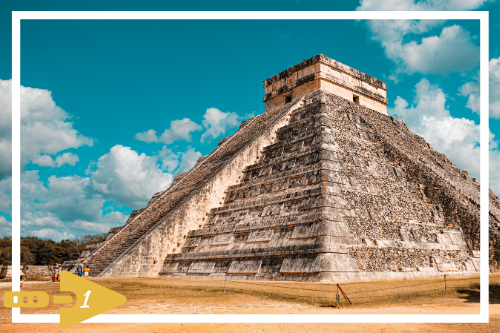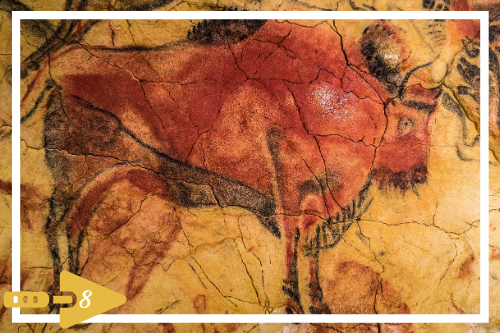
Rock Art
Dr. Arty Fax’s Archy Facts is a blog introducing kids (currently stuck at home) to the exciting world of archaeology!
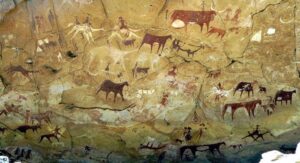
Did you know that “rock art” is found all over the world? ROCK ART, human-made markings placed on natural stone, is studied by archaeologists to help understand past cultures.
Rock art is found on every continent except Antarctica and has been produced in many different contexts throughout human history. The oldest known rock art dates from over 64, 000 years ago!
 Rock art can use SYMBOLS, a thing that represents something else. We use symbols all the time in our everyday lives. Do you know the meaning of the symbols to the left? I’m sure you do. That’s because our CULTURE, the customs, beliefs, laws, and ways of living, commonly uses them and you have learned their meaning over time. However, many of the symbols used in rock art may belong to a culture other than your own and their meaning remains unclear. Are they used for storytelling, to depict spiritual beliefs, or artistic expression? Whatever the meaning, rock art is a form of communication utilized before there was a written language. Communication is an important part of all cultures.
Rock art can use SYMBOLS, a thing that represents something else. We use symbols all the time in our everyday lives. Do you know the meaning of the symbols to the left? I’m sure you do. That’s because our CULTURE, the customs, beliefs, laws, and ways of living, commonly uses them and you have learned their meaning over time. However, many of the symbols used in rock art may belong to a culture other than your own and their meaning remains unclear. Are they used for storytelling, to depict spiritual beliefs, or artistic expression? Whatever the meaning, rock art is a form of communication utilized before there was a written language. Communication is an important part of all cultures.
 Do you know what archaeological site is pictured at the top?
Do you know what archaeological site is pictured at the top?
Scroll down to find out!
Rock art is made by either painting or engraving a rock surface.
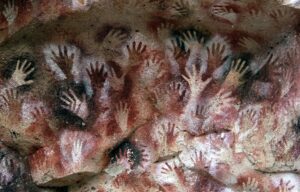
PICTOGRAPHS are paintings or drawings that have been made on a rock face. Such artworks have typically been made with minerals mixed with animal fat, oil, or blood. Commonly used colors are red, black, and white. Red paint is usually attained through the use of ground ochre, while black paint is typically composed of charcoal. White paint is usually created from natural chalk or clay.
Hand print pictographs are found in many rock art producing cultures. This image can be produced by covering the hand in wet paint and applying it to the rock, or placing the hand against the rock and then blowing the paint over the hand with a tube or spitting the paint.
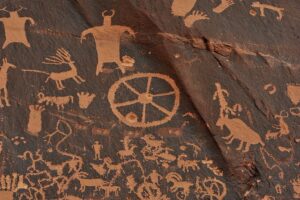
PETROGLYPHS are images engraved or carved into the rock panel. They are created by using a sharpened stone with a hard hammerstone to peck the surface, or scratching into the surface of the stone with a lithic flake or metal blade.
Similar to the more traditional archaeological sites we have learned about, rock art sites need protection as well. If you visit a rock art site, never touch, add paint or climb on or around the art.
Archy Facts @ HOME ACTIVITY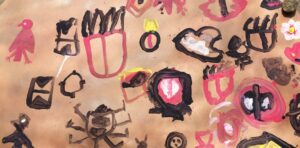
Create a symbol that represents you or an important event in your life.
Make a Pictograph: Paint your symbol on a rock or a brown piece of paper. Or create an entire rock art panel, that is a group of rock art figures.
Make a Petroglyph: Flatten a piece of clay into a flat slab. Using the end of a paperclip, engrave your symbol into the clay.
Share your rock art with friends and family. See if they can determine its meaning.
![]() Altamira Cave
Altamira Cave
Cantabria, Spain
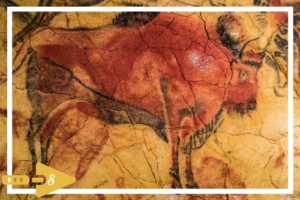
Fun Facts:
The Altamira Cave is 971 feet long containing rock art throughout, however humans only lived in the front chamber. Archaeological remains date the occupation of the cave as early as 36,000 years ago! Around 13,000 years ago, the entrance to the cave collapsed, thus preserving the rock art inside until it was discovered in 1868.


